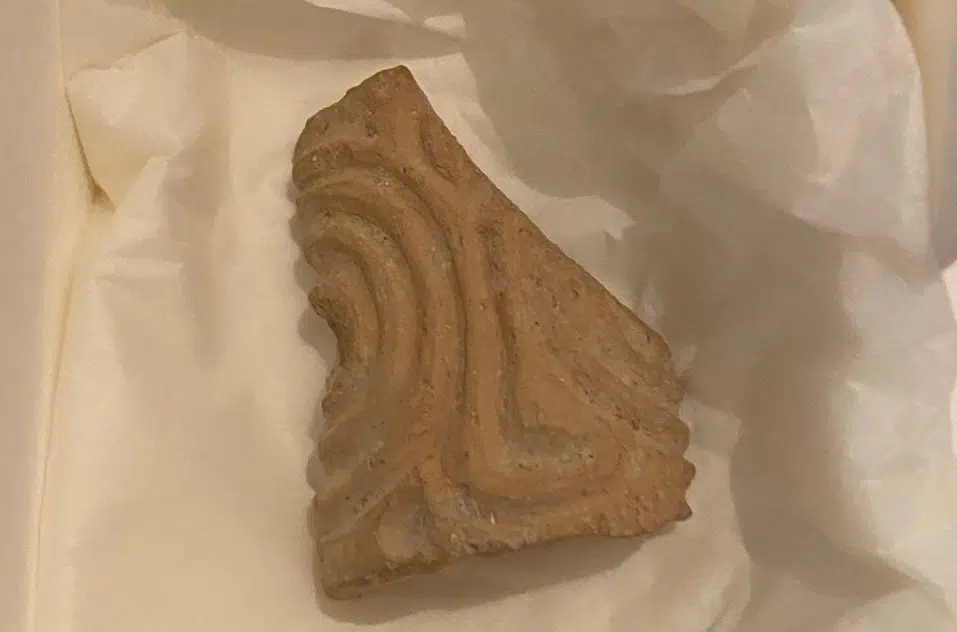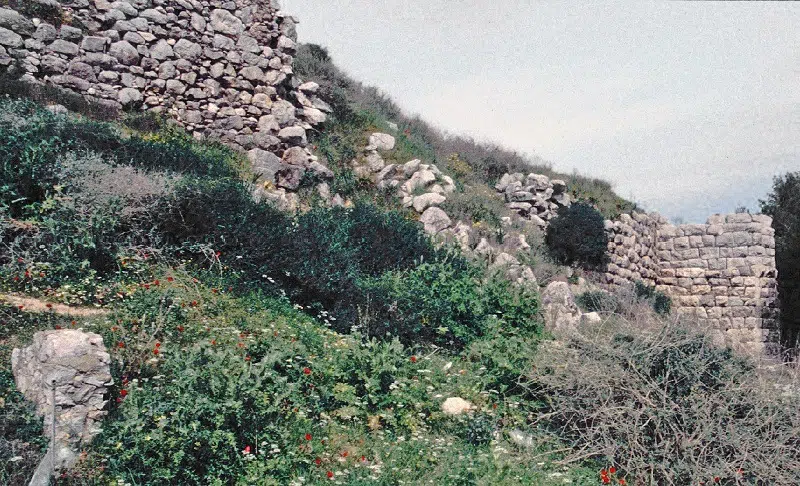
An ancient seal manufactured in the ancient Greek city of Asine, Peloponnese 4,000 years ago returned home on Wednesday after more than a century.
The Swedish embassy in Athens handed over the seal to Culture Minister Lina Mendoni. “In 1922 half of the seal ended up in Sweden, half stayed in Greece,” the Swedish embassy noted in a tweet. Now the two pieces of the seal are reunited.
4,000 years ago a beautiful seal was manufactured in Argolid (Peloponnese). In 1922 half of the seal ended up in #UppsalaUniversity 🇸🇪, half stayed in Greece. Amb @JBorgstam hosted Minister of Culture Dr. Lina Mendoni as 🇸🇪 Institute in Athens returned the part from Sweden to 🇬🇷 pic.twitter.com/2efrG3wSy7
— Embassy of Sweden Greece (@SwedeninGR) February 15, 2023
The seal was made in the ancient city of Asine located on the coast. It is mentioned by Homer in the Catalogue of Ships in the Iliad as one of the places subject to Diomedes, king of Argos.
The fragment of the clay seal was found during an archaeological dig initiated by the then Crown Prince of Sweden, Gustaf Adolf, and later King Gustaf VI Adolf.
It was in the possession of the Uppsala University Museum in Sweden, but the Swedish government decided to grant permission for it to be given to the Archaeological Museum of Nafplion.
Mendoni thanked the Swedish Ambassador Johan Borgstam and said that the return of the artifact proves the excellent relations between the two countries.
“Asine is a special place. It’s a bit hidden, but at the same time rather obvious. It reveals a very old phase of Greek civilization, 4,000 BC. At the same time, however, it is a link in the long chain of the historical duration of this civilization,” the Greek minister said.
Speaking about the seal she said the reunification of the two parts of the artifact has a very significant meaning. “Two parts of a small artifact are united in the land that created them, in Greece,” she added.
Seal was made in the ancient Greek city of Asine

Asine is said to have been founded by the Dryopes, who originally dwelt on Mount Parnassus.
In one of the early wars (740 BCE) between the Lacedaemonians and the Argives, the Asinaeans joined the former when they invaded the Argive territory under their king Nicander; but as soon as the Lacedaemonians returned home, the Argives laid siege to Asine and razed it to the ground, sparing only the temple of the Pythaëus Apollo.
The Asinaeans escaped by sea; and the Lacedaemonians gave to them, after the end of the First Messenian War, a portion of the Messenian territory, where they built a new town (also named Asine).
Nearly ten centuries after the destruction of the city its ruins were visited by Pausanias, who found the temple of Apollo still standing.
Excavations made from 1922 by Swedish archaeologists led by Axel W. Persson and involving the then Crown Prince Gustav Adolf of Sweden found the acropolis of ancient Asine surrounded by a Cyclopean wall (much modified in the Hellenistic era) and a Mycenaean era necropolis with many Mycenaean chamber tombs containing skeletal remains and grave goods.
Excavations have continued since the 1920s almost continuously under the Swedish Institute at Athens.
The site was last used as a fortified position by Italian troops during the second world war when machine gun nests were built.
See all the latest news from Greece and the world at Greekreporter.com. Contact our newsroom to report an update or send your story, photos and videos. Follow GR on Google News and subscribe here to our daily email!



